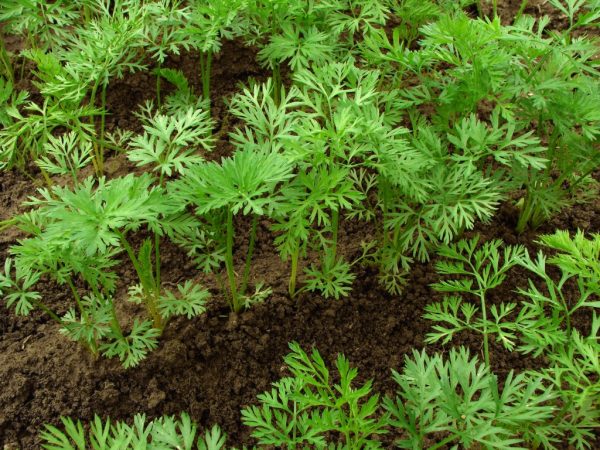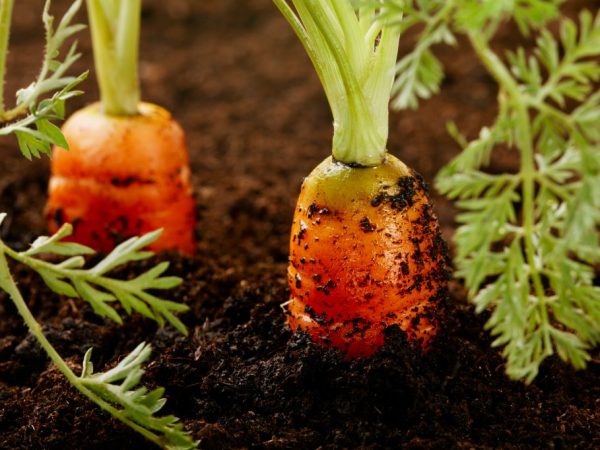After what crops can carrots be planted
To obtain a high-quality harvest, it is important not only to choose a suitable variety, but also to properly care for it. The main rule of horticulture is compliance with crop rotation on the site. It is useful to know after which crops you can or cannot plant carrots.

After what crops can carrots be planted
What is crop rotation
To get good yields, be sure to follow the crop rotation rule. It assumes a favorable planting of plants in one area.
The rule is as follows:
- Some crops drain the soil. Rest is required for such soil.
- It is undesirable to plant on one site one after another plants that consume the same nutrients from the soil.
- Planting the same variety for 2 years in a row in the same area is harmful to the soil.
- Certain plants saturate the earth with elements peculiar only to them, which makes the soil favorable for planting other plants.
- Some non-fertile plants (for example, chrysanthemums, marigolds) scare away pests from fertile plants.
- The aisles are planted with plants.
- For vegetables and fruits, the rule is “tops for replacing roots”.
Why do you need a crop rotation
The use of crop rotation rules allows:
- effectively use the site;
- get maximum yields of vegetables and fruits;
- do not deplete the soil;
- reduce the time and effort spent on pest control;
- save on fertilizers.
Optimal precursors to carrots
Even for such an unpretentious plant as carrots, the rules about predecessors and neighbors on the site are extremely important. Compliance with them allows you to get juicy, tasty fruits and not fight some pests. The following predecessors of carrots are considered favorable:
- tomatoes;
- salad;
- potatoes;
- cucumbers (after 1-2 years);
- zucchini;
- all types of cabbage;
- types of onions and garlic.

We change the beds in places
Planting carrots after garlic is allowed: it does not drain the earth. The root crop is planted before winter. Planting carrots after onions is also safe: it does not affect root crops in any way.
If it is necessary to plant the same plants on the same plot for 2 years in a row, sideration is carried out. White mustard seeds are sown on the garden bed.
In the case of the above-mentioned plants, such a procedure is not required. Potatoes make the soil loose, good for planting carrots. Cucumbers from the entire list of plants fit the rule of tops and roots. Tomatoes and lettuce saturate the earth with trace elements necessary for a vegetable, and pests from them are not dangerous for root crops.
Also, all types of cabbage, zucchini, sowing of pepper can be the predecessors of carrots. The soil after nightshades (for example, eggplant, zucchini) and pepper is sour and loose.
It is not forbidden to plant carrots after strawberries, however, the ground should be carefully dug up from the roots, and the root crop should be planted next year. The pests of strawberries and root crops are completely different, so nothing will threaten the crop.
Worst root crops
There are a number of plants, planting after which harms the root crop. Gardeners do not recommend these precursor vegetables to carrots:
- parsley;
- beans (depletes the soil);
- umbrella plants: anise, dill, coriander, cumin, fennel;
- beets or other root vegetables other than potatoes.
The most dangerous thing on this list is parsley. Its pests affect root crops - it is useless to plant carrots on this area. The same situation is with umbrella plants.
Partially the situation can be saved by chemical treatment and soil fertilization. But this will not give a 100% guarantee that a high and high-quality harvest will be obtained.
Bad results will be given by carrots that have grown in soil previously fertilized with manure: the fruits quickly deteriorate.
Beets, as the predecessor of carrots, are not recommended to be planted for the same reason as beans: beets are a root vegetable that depletes and compacts the earth. Such soil will not suit other root crops in any way.
Useful neighborhood
In an open garden, the danger to plants comes from the outside. Pests appear from coniferous forests, plantations or forest belts. For the root crop, carrot fly, carrot beetle, and bears are dangerous.
Proponents of organic farming plant the following set of non-fertile plants next to the beds:
- chrysanthemums;
- marigold;
- green alder branches (between the beds).
Pests are also fought with camphor oil.
Onions are planted next to the beds (carrot fly does not tolerate this smell).
If the site is located in a field or near a forest, there is a possibility of rodents and small animals attacking the crop. To protect the planting, plants are planted, the smell of which is disgusting to animals:
- mint;
- anise;
- black elderberry.
Elderberry juice is poisonous to animals. The soil is saturated with it, which also has an effect against underground pests.
Conclusion
Almost all plants can be the predecessors of carrots, including garlic, crops of onions, strawberries, all types of cabbage, zucchini. Tomato and pepper beds are also suitable. By observing the rule of crop rotation, it is easy to get a bountiful harvest and not deplete the soil.


